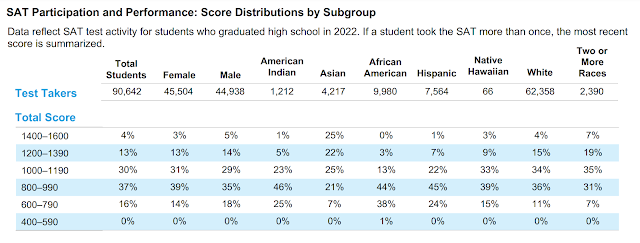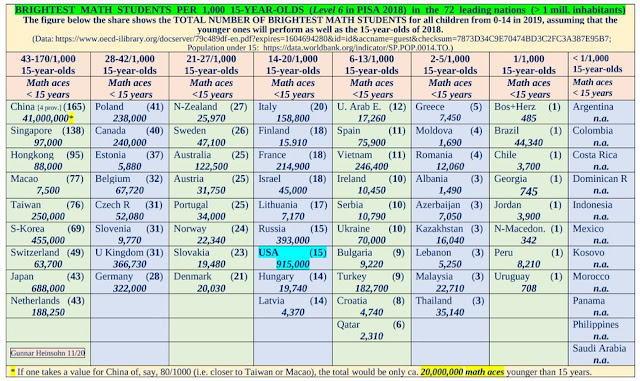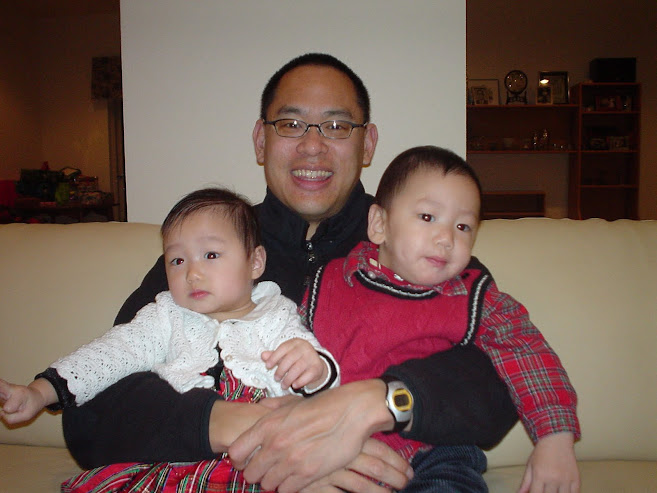This is a very nice article on polygenic embryo screening and its prospects in Israel. Worth reading in full. Leading statistical geneticist Shai Carmi is interviewed. See also his
(embedded player at bottom of this post).
Designer babies? Hi-tech preimplantation genetic testing may soon come to Israel
For generations, the Yu family of Shanghai has suffered from type 2 diabetes. But this summer, as reported in the China Daily, the family welcomed a baby with a better chance of avoiding this disease.
These rosier prospects are the result of a recent breakthrough in assisted reproduction that was advanced with the help of Israeli scientists, called preimplantation genetic testing for polygenic diseases (PGT-P). In addition to China, PGT-P is also gaining ground among couples in the United States who wish to improve health outcomes for their future children. But in Israel, it is illegal.
PGT-P is carried out on an embryo during in vitro fertilization (IVF), prior to its transfer from the Petri dish to the womb. Viable embryos with the probable lowest disease risk can then be selected for implantation.
Since this innovative testing takes into account a complex combination of factors that are not broached in more traditional testing, in some ways it’s almost like an educated guess. Accordingly, polygenic screening is not a diagnosis: It is a prediction of relative future risk compared to other people.
Israeli academics have published peer-reviewed research advancing the science behind polygenic screening, including Shai Carmi, Ehud Karavani, Or Zuk, Gil Atzmon, and Einat Granot-Hershkovitz.
But Start-Up Nation is not yet implementing this cutting-edge tech in the field of fertility. Although fertility treatments are subsidized by the Israeli government, it is still unclear whether Israeli couples ever will have access to the procedure, which screens for polygenic diseases such as diabetes, heart disease and cancer — or whether they would even want it.
PGT-P is different from prior technology in important ways, creating new opportunities and challenges for parents while raising profound ethical dilemmas for society. Similar to older forms of testing, PGT-P relies on analyzing genetic material from embryos created through IVF before implantation and checking them for certain diseases and conditions. The information then helps the parents and doctors decide which embryos to implant.
However, the biggest difference between PGT-P screening and earlier forms of genetic testing is that the prior tests checked for genetically simple conditions such as Down syndrome, cystic fibrosis, or Tay Sachs disease. These diseases, which are serious or fatal, have extremely high “penetrance,” which means that if the gene mutation is seen in the embryo’s DNA, it is nearly certain that the child will have that condition. The appearance of the disease-linked gene is the basis of a clear diagnosis.
This “simple” genetic screening has already borne fruit in the Jewish community: Decades ago, babies in the Ashkenazi Jewish community were nearly 100 times more likely to be born with Tay Sachs than babies in the general US population. Today, because of genetic screenings, the disease is “virtually wiped out.”
In contrast, PGT-P screening can’t tell you with assurance if an embryo will develop a genetic disease such as cancer or Crohn’s disease. That’s because this new screening checks for polygenic diseases – complex conditions caused by the combined impact of possibly thousands of different genes, as well as lifestyle and other environmental factors.
Instead of a clear diagnosis, prospective parents receive a “polygenic risk score,” basically the probability of a child developing a certain disease or condition.
Noa and her husband went through 10 IVF cycles to build their family. “We now have two wonderful boys,” she says.
If I had an opportunity to reduce disease risk in my kids, I would do it
She knows what she would have said if doctors had offered her polygenic screening: “I want that technology.” As a speech therapist who works with kids facing a lot of health challenges, she was very worried about what her own kids would face.
“If I had an opportunity to reduce disease risk in my kids, I would do it. It would definitely help my peace of mind as a mother. Everyone here in Israel should have the option of using it,” Noa says.
No clear-cut answers
Scientists at the US-based Genomic Prediction, Inc. published an article in 2019 describing the “first clinical application” of polygenic screening of embryos. Genomic Prediction is a polygenic screening company based in New Jersey that partners with various IVF clinics around the world.
However, to date, the Israeli Health Ministry has yet to even issue a statement on the use of polygenic screening on embryos.
For some, the fact that PGT-P screening isn’t available, or even legal, in Israel is somewhat counterintuitive, given Israel’s prominence in the fields of both assisted reproduction and genetic testing.
Israelis undergo more rounds of IVF per capita than any other nation in the world. This is largely due to religious and cultural norms that are highly supportive of child-bearing, combined with the nationally financed healthcare system that provides full coverage for as many IVF cycles as needed, up to two children per family.
In addition, “in Israel there is a lot more openness to preimplantation genetic testing in general because of the high prevalence of various disease mutations in our community,” says Carmi, an associate professor at the Hebrew University School of Public Health and Faculty of Medicine.
Today, Carmi is a leading researcher on the accuracy of polygenic screening. As part of his post-doctoral project at Columbia University in New York, he helped generate important genetic sequencing data for Ashkenazi Jews.
Israel’s embrace of most genetic testing is reflected in the Israeli Health Ministry’s website, which lists dozens of recommended genetic screenings, broken down by ethnic sub-community. But these screenings are for monogenic disorders, easily diagnosed by looking for a single gene mutation.
“In Israel, the Health Ministry controls which diseases can be screened for, and candidate variants need to have high penetrance and lead to diseases with severe symptoms,” says Carmi.
Playing the odds
Miri is a consultant originally from central Israel. Although she did not have any known fertility problems, she chose to undergo IVF specifically because it would allow her to screen for a certain hereditary disease. She and her husband are both carriers of a rare mutation, so a natural conception meant a 25 percent chance of the fetus suffering from this generally fatal condition.
“For me, it was a choice between the extra physical hardship of IVF, or the extra emotional hardship of a pregnancy where, for months, we would not know if the baby would have this disease,” Miri said.
In contrast, PGT-P can’t provide conclusive information, because in the context of polygenic diseases like diabetes and heart disease “nothing is deterministic,” says Carmi.
According to Carmi, a child may develop the condition or may not, and non-genetic factors can certainly affect the outcome. Based on his peer-reviewed research on statistical modeling of polygenic screening, though, Carmi notes that “you can get quite a substantial risk reduction.”
The “relative risk reduction” projected to be accomplished by PGT-P varies depending on the disease. However, according to a 2021 research paper by Carmi and his collaborators, for schizophrenia and Crohn’s disease, around a 45% relative risk reduction is achievable for parents testing five embryos and choosing the best scoring, compared to implanting a randomly chosen one of the five.
The testing, of course, comes with a fee: Costs vary, but Genomic Prediction in New Jersey charges a $1,000 up-front fee, plus $400 per embryo analyzed. Of course, this is an add-on cost for people already doing IVF, which in the US can cost up to tens of thousands of dollars per cycle.
Pricing can get even more complicated, however, because different services end up bundled together, or are offered as add-ons once related costs are already accounted for. But one of the earlier forms of embryonic screening (PGT-A, which checks for aneuploidies, giving rise to Down syndrome for example) can cost several thousand dollars.
By contrast, carrier screening, which is a blood test performed on the parents to check for “simple” monogenic-disease carrier status, costs only several hundred dollars, and is often also covered by insurance.
In Israel, for couples whose family history or carrier-screening blood tests reveal a heightened risk for having children with a specific monogenic disease, the Health Ministry promotes the benefits of traditional genetic testing of embryos prior to implantation in the womb.
According to its website, “Pre-implantation Genetic Diagnosis (PGD) is today considered to be one of the practical options for couples who are at high risk for giving birth to a baby with a chromosomal abnormality or a genetic disease. This is because the process allows pregnancies to be achieved with healthy fetuses, and avoids the need for pregnancy termination, a procedure that constitutes a problem for many couples for religious, ethical and/or moral reasons.”
The nuts and bolts
PGT-P was developed using artificial intelligence technology applied to huge databases containing the genetic and health information of hundreds of thousands of people. Statistical data analysis of DNA and health outcomes allows scientists to see which complex genetic patterns more frequently show up in individuals who also develop a certain disease, such as schizophrenia. By genetically analyzing an embryo and then comparing its genetic information to this population data, the embryo’s polygenic risk score can be calculated for a given disease. This can already be done for a great many common diseases, with varying levels of predictive power, and as genetic databases grow, the reliability of these risk scores will continue to improve.
The couple also receives the raw data about their embryos’ genes and risk scores, so if they prefer to implant the embryo with the lowest risk of type 2 diabetes rather than the lowest combined disease risk, they can do that
“For prospective parents undergoing IVF and electing to use polygenic screening, somewhere between 10 and 20 polygenic risk scores are combined in a weighted average, with more serious diseases given greater weight in the final figure. This averaging provides a single number for each embryo — a health index — that can be used to rank the available embryos, so that the one with the best health index can be implanted,” says Carmi.
“Of course, the couple also receives the raw data about their embryos’ genes and risk scores, so if they prefer to implant the embryo with, let’s say, the lowest risk of type 2 diabetes, rather than the lowest combined disease risk, they can do that,” says Carmi.
An emotional decision
Michal Amrani, 32, lives in the central Israeli town of Ramat Hasharon and is working toward a master’s degree in chemistry from the Weizmann Institute. Through a four-year IVF process, she and her husband Sarel welcomed a son, and later, a set of twins. They say they are unlikely to use polygenic screening, even if it becomes available in Israel.
“As it is, we opted not to do some of the genetic testing that was already available to us,” Amrani says. “I work in science, so I am more open to these things, but my husband doesn’t really like all these genetic tests. For him, there’s risk in lots of things, and his optimistic nature helps him be comfortable that things will work out.”
Others, like Noa, are more interested in trying out preimplantation polygenic screening of their embryos, but even if Israel would change its rules to allow it, it’s a tricky issue. First, there are concerns about the psychological difficulties that this technology may pose for prospective parents.
Rona Langer Ziv is a social worker and cognitive behavioral psychotherapist who counsels IVF patients — both couples and singles — at a large Israeli hospital, as well as through her private clinical practice.
“Due to the potential implications of this new technology,” she says, “I would be concerned about a higher risk for depression and anxiety among the IVF patients.”
“Even if they feel they understand what they are signing up for at the beginning of the journey, they may not appreciate the emotional, ethical, and psychosocial implications of polygenic screening several IVF cycles down the road,” says Langer Ziv. “They may find themselves worrying that the embryos’ scores are not good enough, or that they won’t have any viable embryos left to choose from.”
Even if they feel they understand what they are signing up for at the beginning of the journey, they may not appreciate the emotional, ethical, and psychosocial implications of polygenic screening several IVF cycles down the road
Because polygenic screening predicts relative risk rather than providing an affirmative disease diagnosis, “women, especially those over 40 who may have very few embryos to work with, end up facing a serious dilemma — they may be discarding an embryo that could have resulted in a healthy child,” says Langer Ziv.
Amrani is in a similar situation. She and her husband are ready for more kids, but right now they have just one embryo available, so that’s the embryo they will try to implant. Even though she won’t be using polygenic screening, Amrani says that “it does sound very innovative. It’s nice that there’s something like this.”
Social worker and cognitive behavioral psychotherapist Rona Langer Ziv. (Courtesy)
Indeed, Langer Ziv acknowledges that some people would find polygenic screening appealing, particularly those with higher education levels.
“There’s definitely coolness in the technology. It’s scientifically advanced, and it could offer interesting health insights about your future children. Everyone would theoretically like to use a technology that potentially predicts a more healthy child, although there is disagreement among fertility specialists about the benefits involved,” Langer Ziv says.
“And for some IVF patients, it might also provide a feeling of control during a process that involves so much stress, uncertainty, luck, and randomness,” she says.
Risk of eugenics
Regardless of how polygenic screening would be received by potential consumers, there are grave concerns about the impacts of this new technology on society. Various ethical issues have been raised for decades about older forms of genetic screenings, including fears of stigmatizing those living with genetic diseases, and questions about equitable access to these technological advances.
Perhaps the most significant ethical concern, and one that looms larger with polygenic screening than with older tests for monogenic diseases, is the potential for eugenics. This is the infamous and dangerous philosophy, practiced in Nazi Germany and elsewhere, that society should try to promote the creation of the most genetically “superior” babies.
Miri and her husband now have a baby boy and are looking forward to having more children — they still have three embryos to choose from. Asked whether she would be interested in polygenic screening if it became available in Israel, Miri says she’s unsure.
“I would love to see less suffering in the world from diseases. But where do we draw the line?” she says.
Indeed, the potential for eugenics is most stark when screenings cross over from the realm of disease prevention to the world of intelligence and aesthetic traits such as height or eye color. As such, some laboratories preemptively claim they will only screen for health concerns: An American polygenic screening company currently states that it does not test for “high IQ,” nor for “purely cosmetic traits such as hair color and eye color.”
But complicating the “noble” stance, genetic researchers have shown that “IQ is negatively correlated with most psychiatric disorders [and] positively correlated with autism and anorexia,” meaning that a high IQ comes with a lower risk of most psychiatric diseases and a higher risk of certain other neurological and mental health conditions.
As such, while some companies may currently refuse to offer IQ screening, it is not hard to imagine a health-based argument for loosening such protocols in the future, particularly as society becomes more used to the practice of PGT-P.
Similarly, a large study was published this year by researchers at Brown University and Peking University that found that “light eye colors were associated with high risks” of certain forms of skin cancer. Again, one can picture checks for eye color making their way into future genetic screenings through a backdoor of disease relevance.
In Carmi’s view, the responsible way for Israel to approach the prospect of polygenic screening is a gradual one.
“Ideally, we would start by recruiting Israeli participants for local academic research, with oversight by the Health Ministry,” Carmi says. “Once we develop more insight into how predictive polygenic screening is in our population, the relevant stakeholders — including patients, professional organizations, and regulators — can balance competing interests and local values, and come up with tailored guidance on its use in Israel.”
For some Israeli citizens, of particular concern is the idea of the wealthy trying to create perfect babies.
“If polygenic screening came to Israel, I would want to see a lot of regulation about who gets to use it, how it is used, and what reasons it is used for,” Miri says.













.jpg)


